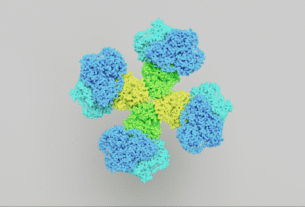This condition affects many women in the world. It occurs when the organs of the pelvis, like the bladder or uterus, bulge and descend into the vaginal tube. Pelvic prolapse is a condition that can cause pain and discomfort and interfere with everyday activities. Urogynecology within gynecology concentrates on pelvic-floor disorders such as prolapse of the pelvic organs. We will look at the causes and symptoms of pelvic Organ Prolapse and the available treatment options.
Understanding Pelvic Organ Prolapse
This condition is caused by damaged or weakened pelvic floor muscles supporting the pelvic lining organs. Several factors are responsible for the development and progression of pelvic Organ Prolapse. These include pregnancy, childbirth, and hormonal changes. This condition can include the descent of the uterus, the rectum, or both.
Pelvic Organ Prolapse: Signs and Symptoms
The symptoms associated with pelvic organ prolapse depend on the severity and organ involved. Common symptoms include weight or pressure in the pelvis, a bulge/protrusion in vaginal tissue, urinary prolapse, incontinence (inability to empty bowels or bladder), constipation, and pain or discomfort during sexual activity. Some women can also experience lower-back pain or aching around the pelvic area.
Diagnosis of Evaluation
Urogynecologists have a wide range of diagnostic and evaluation methods for pelvic prolapse. The first steps usually include a medical history, a physical exam, and, if needed, a cervical examination. Depending on the severity of prolapse or any associated abnormalities, specialized tests like urodynamics studies to assess bladder function and imaging exams such as pelvic magnetic resonance imaging (MRI) or ultrasound studies may be carried out. These diagnostic methods help urogynecologists customize treatment plans for their patients.
Treatment Options for Urogynecological Disorders
Urogynecological therapies for pelvic instrument prolapse aim to alleviate symptoms, improve the quality of your life, and restore normal position, function, and pelvic organs. Severity, patient symptoms, and general health determine treatment options. Non-surgical options such as Kegel exercises or pessaries can be used for mild-to-moderate cases.
Pelvic Organ Prolapse and Surgical Interventions
Surgical intervention may be required for more severe cases and when conservative measures are ineffective. Urogynecologists utilize various surgical techniques for pelvic prolapse repair, including vaginal methods (e.g., posterior or anterior colporrhaphy and vaginal hysterectomy), abdominal approaches (e.g., Sacrocolpopexy), and a combination of both. Minimally invasive surgery, such as laparoscopic, robotic-assisted, or minimally invasive techniques, can offer benefits like reduced pain, shorter stays in the hospital, and faster recuperation times. Urogynecologists will work closely with patients to determine their needs and factors to choose the best surgery.
After-Treatment Care & Follow-Up
The post-treatment and follow-up care are vital following treatment for a pelvic organ relapse. Urogynecologists monitor patients’ postoperative progress and provide guidance, including on activity restrictions and pelvic-floor exercises. Regular follow-up appointments enable urogynecologists to assess the success or treatment, address concerns or complications and provide ongoing patient support.
Conclusion
Pelvic organ prolapse is a serious condition affecting a woman’s quality of life. But with the help of urogynecologists and their specialized treatment, many effective options exist. Understanding the cause, recognizing the symptoms, and seeking timely care from a urogynecologist can relieve women with pelvic Organ Prolapse. Lifeline Medical Associates, with its team of urogynecologists, provides comprehensive care and treatment for women suffering from pelvic organ prolapse. With the right diagnosis, a personalized treatment plan, and ongoing care, women with pelvic organs can gain confidence, comfort, and overall health.




